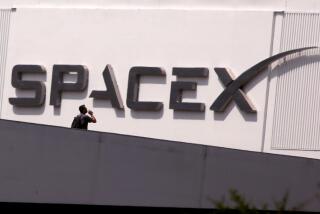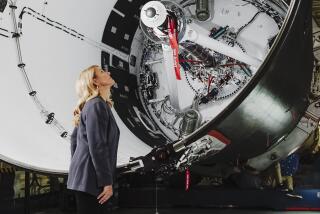How I Made It: Wanda M. Austin, president and CEO of Aerospace
The gig: Wanda M. Austin, 59, is the president and chief executive of Aerospace Corp., an El Segundo brain trust for the Pentagon’s space program. Although not well known outside defense circles, it is regarded as one of the nation’s most important assets.
Classified space: For decades, Aerospace, which receives federal funds, has provided oversight for development of highly secretive spy satellites, ballistic missiles and launch vehicles. Aerospace scientists and engineers oversee the technical side of contracts awarded to defense firms to ensure the work is being done properly. It’s important work in a place where a misplaced decimal point can result is disastrous consequences for billions of dollars’ worth of intricate space hardware.
“As an engineer you want to work on those complex programs,” Austin said. “People pay attention to people working on the hard problems.”
Early days: Austin hopes her background as a black female will help her serve as a role model for young women and minorities. She was raised in a low-income Bronx neighborhood. Her father was a barber and her mother a nurse, who stressed involvement outside of school. Austin participated in the Girl Scouts and church activities.
Passion: From an early age, her favorite subject in school was math. This was due in part to arguments with English teachers in school, but Austin also liked that the answers in math can’t be disputed.
She was accepted into the prestigious Bronx High School of Science, whose graduates have gone on to win eight Nobel Prizes, six Pulitzer Prizes and eight National Medals of Science. She played volleyball and enjoyed roller-skating and gymnastics.
School: After she won a scholarship to Franklin & Marshall College, a small liberal arts college in Lancaster, Pa., she earned a bachelor’s degree in mathematics and figured she’d become a teacher. But later, while pursuing a master’s degree in math at the University of Pittsburgh, she tutored engineers and realized that engineers make more money.
“Plus,” she said, “engineering sounded like a lot more fun.”
It was in college that she met her husband, Wade, who is also an engineer. After graduating with a systems engineering degree, Austin was hired as a technical staff member at Rockwell International in Anaheim. She worked on radar modeling systems but left after a downturn in industry spending.
Welcome home: Austin stayed in California and landed at Aerospace in 1982 as an entry-level engineer. She was one of the few women on the organization’s campus, but she ultimately got the opportunity to work on massive programs including the GPS satellite constellation, the Pentagon’s global network of strategic communications satellites, and Air Force satellite communications.
“It was an honor to be a part of those teams,” Austin said. “I was never afraid to work on a difficult challenge.”
Along the way, Austin managed to earn a doctorate degree in systems engineering from USC and have two children. She made a steady climb up the management ladder before heading Aerospace’s national systems group, which supports the national security space and intelligence community’s multibillion-dollar spy satellites.
Top spot: Austin took over as chief executive of Aerospace in 2008, becoming one of the most influential aerospace executives in the country. During her tenure, she has overseen Aerospace in one of its busiest periods since the research center was formed in 1960 at the height of the Cold War.
Among her duties has been to support the National Reconnaissance Office, or NRO, the government organization that operates spy satellites, which has said it has undergone “the most aggressive” launch schedule in 25 years. In addition, Aerospace has supported “new space” missions carried out by private businesses, such as Hawthorne’s Space Exploration Technologies Corp., or SpaceX.
Aerospace’s budget was $868 million in fiscal 2013. It currently employs about 3,500 workers.
Personal endeavor: Austin, who lives in El Segundo, has tried to travel to each U.S. state with her husband. They’ve made it to about 35.
Hurdle: Austin said her biggest challenge would be attracting young graduates to replenish a diminishing pool of experienced engineers, especially during a downturn in government spending. This year, about 2,000 workers at Aerospace were furloughed because of the federal government’s partial shutdown.
Advice to leaders: “As much as you would like to have all the information when you make a decision, it rarely happens,” Austin said. “You must trust your team and make it. Not making decisions costs money too.”
Twitter: @wjhenn
More to Read
Inside the business of entertainment
The Wide Shot brings you news, analysis and insights on everything from streaming wars to production — and what it all means for the future.
You may occasionally receive promotional content from the Los Angeles Times.











